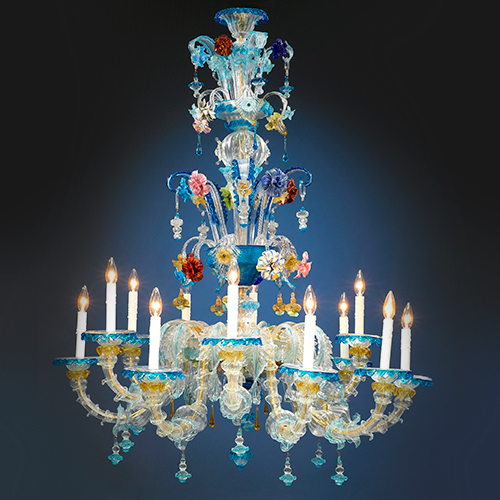
Venetian Murano glass chandelier, ca. 1880 (Photo: Rauantiques/CC BY-SA 4.0)
In the late medieval period, Venetian authorities mandated that glassmakers relocate from the city of Venice to the nearby island of Murano, a decision driven by both practical and strategic concerns. The risk of devastating fires—an ever-present danger given the high temperatures required for glass production—posed a serious threat to the densely built wooden structures of Venice. Today, Murano remains the heart of Venetian glassmaking, blending centuries-old traditions with contemporary experimentation to keep this extraordinary art form alive.
Art historian Jennie Hirsh traces the rich history of Murano glassmaking, focusing on artisans of the 20th and 21st centuries. She explores medium-specific terms—such as aventurine glass, filigrano, caning, and intricate beadwork techniques like murrine and millefiori—while examining the diverse techniques, effects, and styles found in chandeliers, vases, jewelry, and both sculptural and functional objects.
Hirsh also highlights Murano’s famed fornaci (glass workshops), including Venini, Cenadese, Seguso, and Carlo Moretti, and examines how renowned designers from around the world such as Carlo Scarpa, Tapio Wirkkala, Ettore Sottsass, and Dale Chihuly have contributed to the ongoing innovation of Murano glass. Hirsh offers insights into the best places in Venice to experience glass artistry today, from the Museo del Vetro on Murano and the Stanze del Vetro of the Cini Foundation on San Giorgio Maggiore to the dynamic Glass Stress exhibitions, which have showcased contemporary glass art in Venice and beyond since 2011.
General Information

